News and Events from 2023
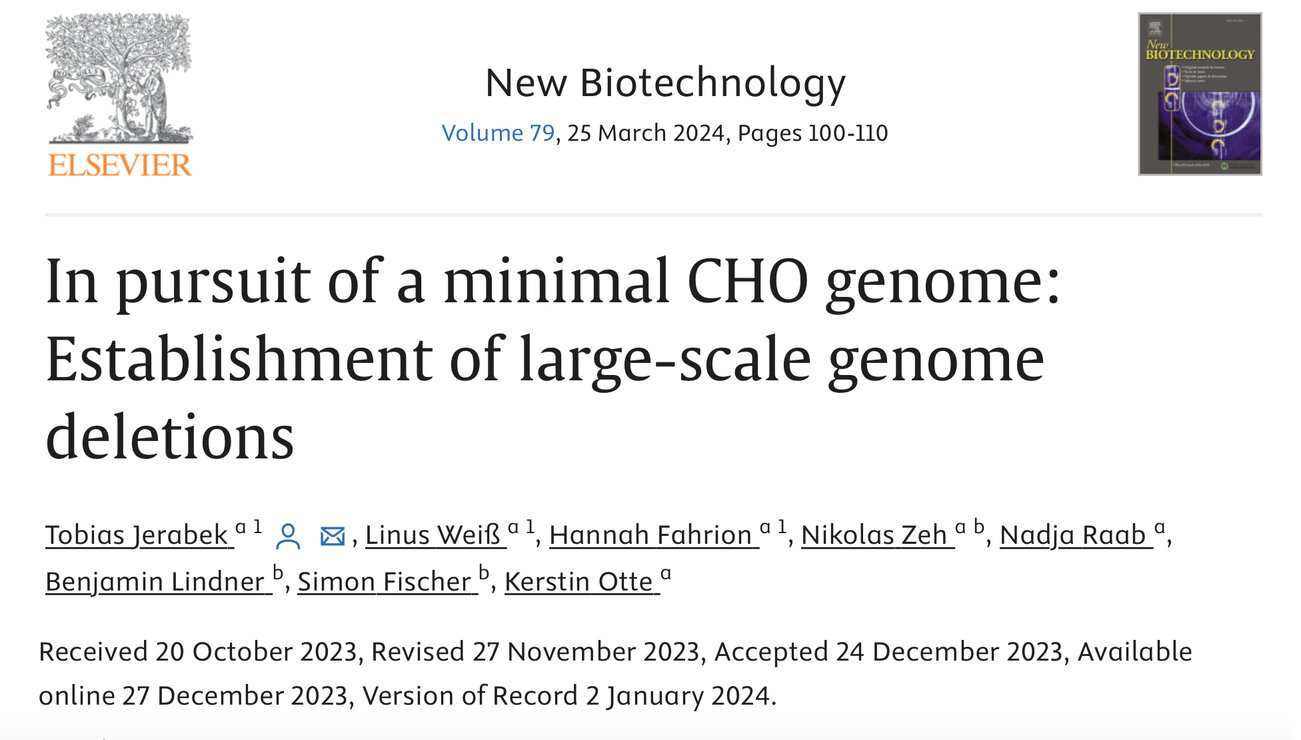
New publication from the Lindner Group!
The Lindner Group was able to establish and apply a large-scale genome deletion strategy for targeted excision of large genomic regions in chinese hamster ovary (CHO) cells using optimized CRISPR/Cas9 based experimental protocols. The concept presented in their 'New Biotechnology' publication serves as a directive to accelerate the development of a significantly genome-reduced CHO host cell chassis paving the way for a next generation of CHO cell factories.
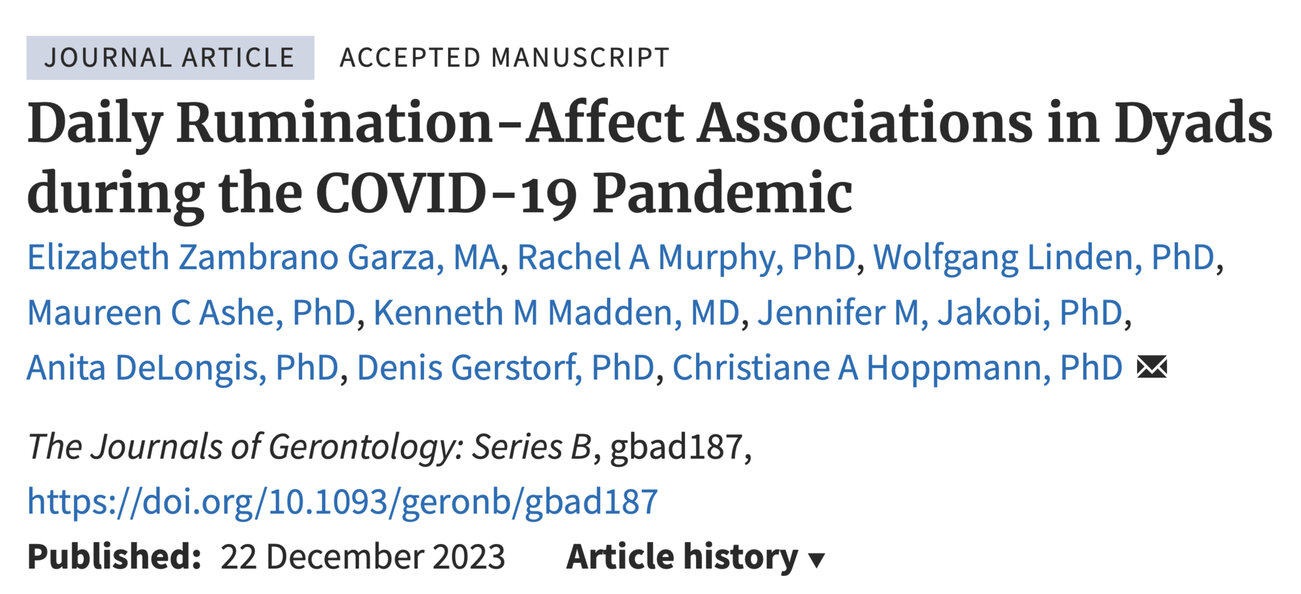
New publication from the Gerstorf Group!
The Gerstorf Group investiagted the social context of rumination (negative and repetitive self-oriented thinking. Whole previous studies focused on marital relationships, this study includes a range of different relationships (e.g., spouses, siblings, friends, etc.) and examines the role of rumination by close others on individual well-being during the COVID-19 pandemic.

New pubblication(s) from the Gerstorf Group!
The Gerstorf Group contrbuted five articles to the December 2023 Issue of Innovation in Aging:
- Associations between sense of purpose, negative affect, and cortisol: evidence from repeated daily assessments
- Rumination in dyads during time of uncertainty—daily life assessments after the onset of the covid-19 pandemic
- Perceived neighborhood characteristics and cognitive aging: findings from the seattle longitudinal study
- New opportunities for advancing dyadic health science in gerontology
- The moderating role of positive solitude in the relations between loneliness and depressive symptoms
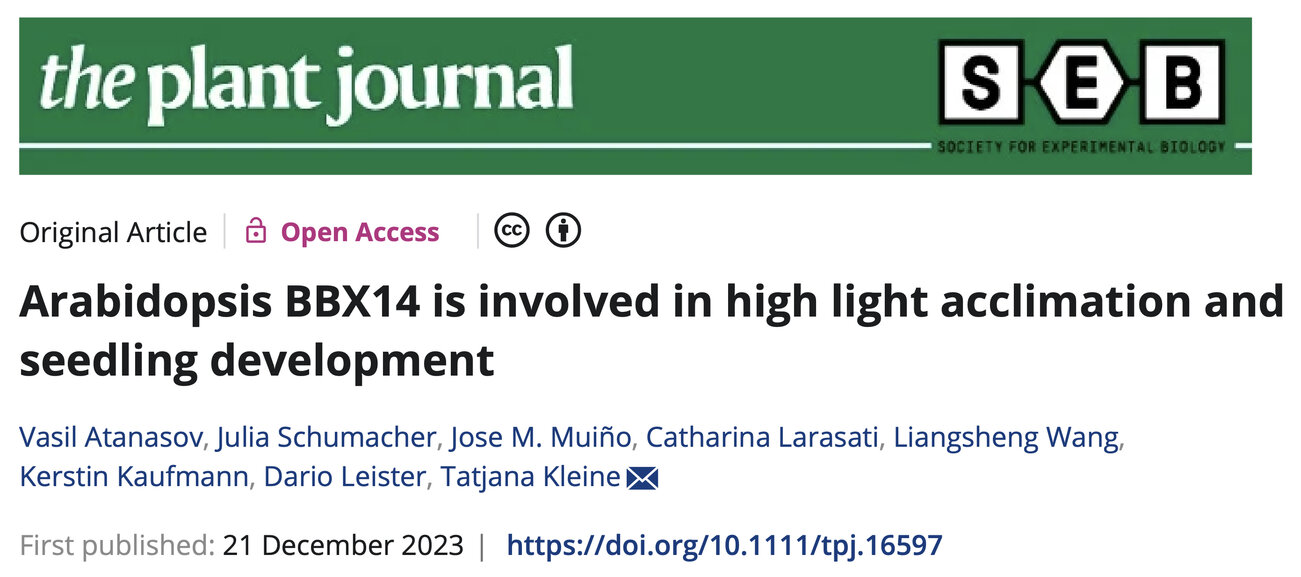
New publication from the Kaufmann Group!
The Kaufmann Group revealed that the transcription factor BBX14 may function as a regulator of the circadian clock, plays a role in chlorophyll biosynthesis during early onset of light and is required to acclimate plants to HL stress. Thus, BBX14 could act as an integrator of biogenic signals in Arabidopsis.

New publication from the Seitz Group!
The Seitz Group developed a method based on SPPS and native chemical ligation/desulfurization chemistry that allows the rapid, reliable, and glyco-economical synthesis of long multi-O-GalNAcylated peptides.

New publication from the Markett Group!
The Markett Group examined the white matter fiber tracts in individuals with depressive symptoms to investigate a potential connection between a genetic and environmental risk for depression and structural changes in the brain.
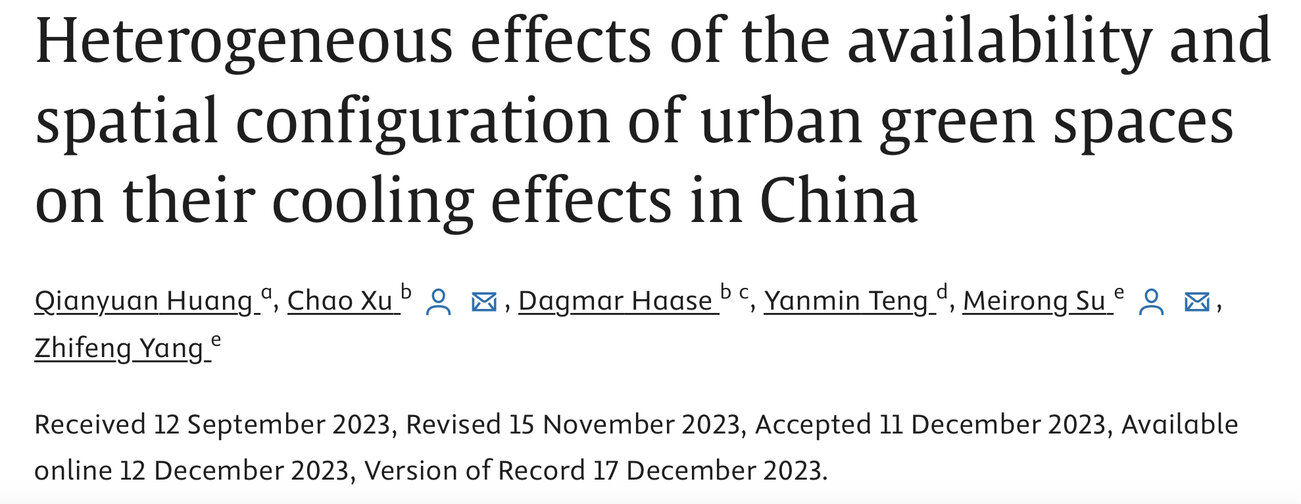
New publication from the Haase Group!
The Haase Group investigated the impacts of urban green space (UGS) availability and spatial configuration on urban land surface temperature (LST) in different cities in China and found that UGS availability was negatively associated with both daytime and nighttime LST, while the Gini coefficient showed a positive impact solely on daytime LST, indicating that an adequate and equally distributed UGS contributes to lower environmental temperatures during the daytime.
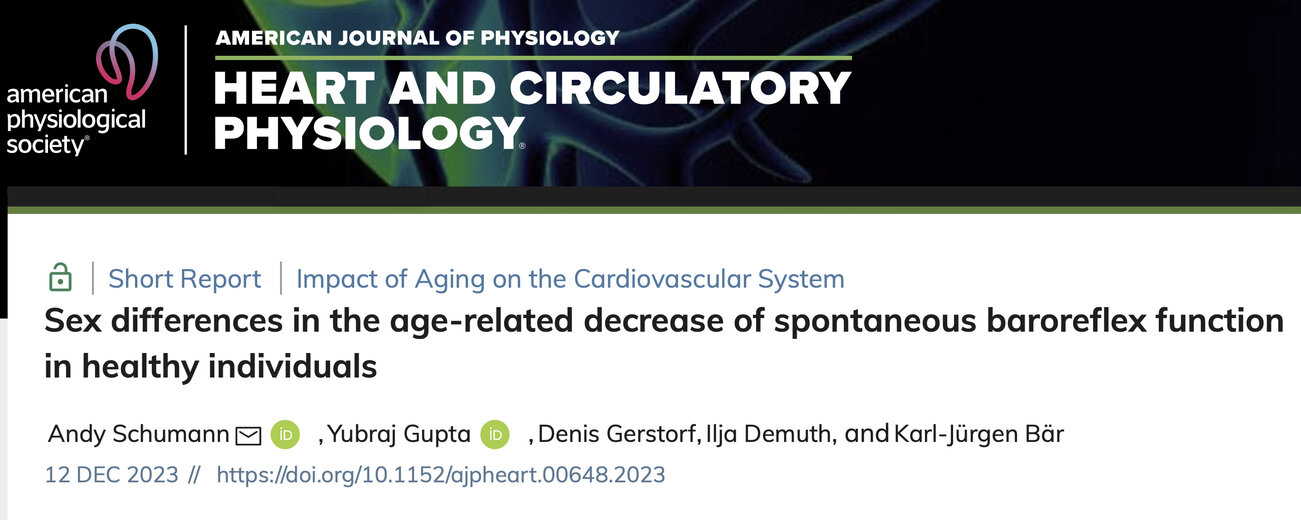
New publication from the Gerstorf Group!
The Gesrtorf Group investigated the age-related decrease of spontaneous baroreflex sensitivity in men and women and could link gender-specific differences to age-related changes in major sex hormone levels, suggesting significant implications for diverse cardiovascular outcomes and the implementation of targeted preventive strategies.

New publication from the Matuschewski Group!
The Matuschewski Group identified Nrp-1 expression on CD8+ T cells as an early activation marker that exacerbates detrimental CD8+ T cell responses during both, parasitic PbA and acute LCMV infections.

4th Insi(ght)de LIST Seminar
24-11-2023 (Maud-Menten-Saal, Campus Nord)
Instead of Talks we had a science 'Speed Dating' event. Click on the link for more information and impressions.

New publication from the Hess Group!
The Hess Group studied the effect of wrinkles on how we are perceived. As wrinkles and folds 'mimic' facial expressions, on first impression they often result in a less attractive and more negative perception.

New publication from the Markett Group!
The Markett Group was interested in the effects excessive social media use on cognitive functioning, as similarities with addictive behaviors have been observed. In this respect, they especially investigated the Fear of Missing Out (FoMO) and found that higher FoMO tendencies might trigger excessive social media use, which in turn could lead to cognitive failures, possibly due to distraction and reduced attention to everyday tasks.

New publication from the Lindner Group!
The Lindner Group established an improved model to investigate the interspike intervals (ISIs) that occur during IP3-induced Ca2+ signaling allowing to them to reproduce numerous previously described experimental effects.

New publication from Ann Ehrenhofer-Murray!
Ann Ehrenhofer-Murray contributed her perspective on German Research Consortia in the field of chemical biology of native nucleic acid modifications.

New publication from the Erhardt Group!
If you want to find out how bacteria use their F piluses for transferring DNA even over a longer distance allowing them to spread drug resistance and virulence in their bacterial community, check out the recent publication of the Erhardt Lab!

3rd Insi(ght)de LIST Seminar (2023)
10-11-2023 (Maud-Menten-Saal, Campus Nord)
- Lorenz Gygax / Edna Hillmann (Thaer)
- Kai Matuschewski (Biology)

New publication from the Ehrenhofer-Murray Group!
The Ehrenhofer-Murray Group identified the yeast cell wall components β-1,6- and β-1,3-glucan and enzymes involved in their synthesis as important factors for kinetochore function in Saccharomyces cerevisiae.

New publication from the Erhardt Group!
Marc Erhardt, together with Rosa Einenkel and Manuel Halte, contributed the Chapter 'Quantifying Substrate Protein Secretion via the Type III Secretion System of the Bacterial Flagellum' to the 2024 edition of Bacterial Secretion Systems, which is part of the Methods in Molecular Biology book series.
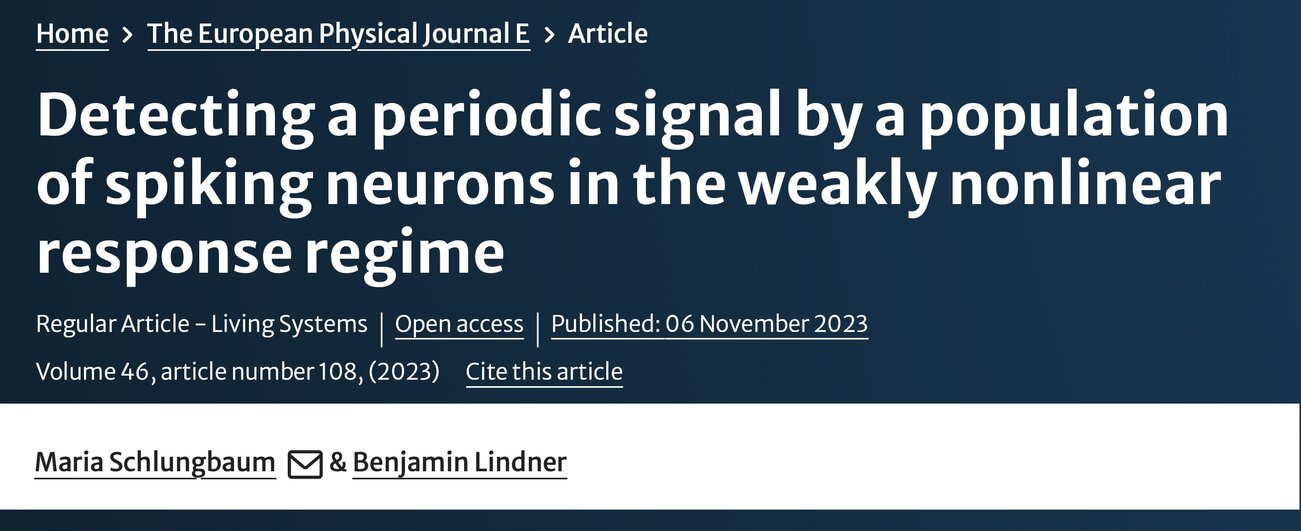
New publication from the Lindner Group!
The Lindner Group investigated a variant of the cocktail party problem in the neuronal context. They studied the response of a population of stochastic leaky integrate-and-fire (LIF) neurons to two periodic signals to determine whether the presence of one of the stimuli can be detected from the population activity.

New publication from the Klipp Group!
Check out the most recent publication of the Klipp group on α-synuclein, a membrane-associated protein associated with neurodegeneration.

New publication from the Brockmann Group!
The Brockmann Group analyzed genome-wide SNP data of several hundreds of goat specimens from 14 taxonomic units to trace gene flow between domestic and wild goats over the past 10,000 years.

New publication from the Hillmann Group!
The Hillmann Group looked compared abomasa (the fourth stomach of a ruminant) of calves that grazed on two swards with different plant composition to identify differences between abomasa of calves fed under intensive conditions and those kept on pasture. Find out more in their

2nd Insi(ght)de LIST Seminar (2023)
27-10-2023 (Humboldt-Kabinett, Campus Adlershof)
- Benjamin Lindner (Physics)
- Christoph Arenz (Chemistry)
- Pawel Romanczuk (Biology)

New publication from the Brockmann Group!
In this study, the Brockmann Group analyzed unmapped and usually disregarded reads from 302 German Black Pied cattle. They were able to find sequences of Bovine parvovirus 3 and Mycoplasma species providing evidence for the presence of pathogens and emphasizing the importance of unmapped reads for gaining insight into bacterial and viral infections, which is important for veterinarians and epidemiologists.

New publication from the Hess Group!
The Hess Group investigated the mental association of appeals (expressions to communicate what a person wants the observer to do) and expressions through reverse correlation and could associate the appeal to celebrate with a happy expression, the appeal to empathize with a sad expression, a pleading appeal to stop more strongly sadness than with anger and a command to stop strongly with anger.

1st Insi(ght)de LIST Seminar (2023)
13-10-2023 (Maud-Menten-Saal, Campus Nord)
- Edda Klipp (Biology)
- Tsu-Wei Chen (Thaer)
- Sebastian Markett (Psychology)
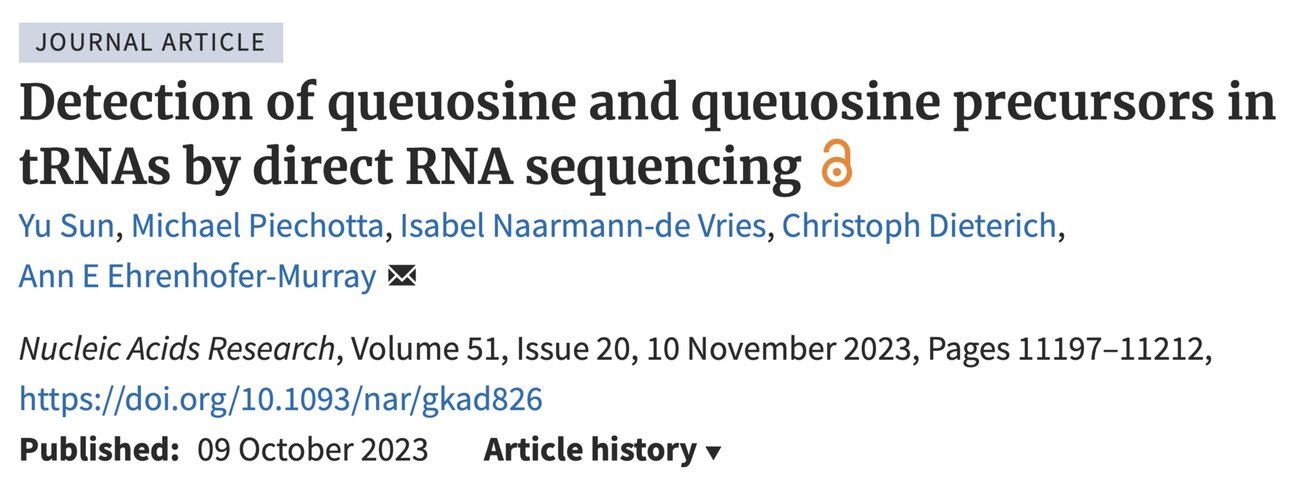
New publication from the Ehrenhofer-Murray Group!
The Ehrenhofer-Murray Lab established an improved protocol to investigate tRNA modification 7-deazaguanine-derivatives such as Queuosine (Q) and its precursors.

New publication from the Lindner Group!
In this study, the Lindner Group demonstrated the diverse applications of droplet digital PCR (ddPCR), which can be used to enable precise, sensitive and reproducible absolute quantification of genomically integrated transgene copies during cell line development and cell bank characterization.

New publication from the Brockmann Group!
The Breeding Biology and Molecular Genetics Group explored how genetic variants are related to differences in the gut microbiota in response to American and ketogenic diets. If you want to know how sex, diet, and genetic background affect gut microbiota, have a look at their microbiome article.

New piblication from the Erhardt Group!
The Molecular Microbiology Group developed a set of arabinose-inducible artificial transcription factors (ATFs) to control gene expression in E. coli and Salmonella. To read more on their work, check out their Communications biology article.

New publication from the Plested Group!
The Cellular Biophysics Group investigated the interaction between CaMKII and Calmodulin and identified the introduction of a photocrosslinking unnatural amino acid as a promising tool for UV-controlled regulation of CamKII activation in mammalian cells. Find out more in their article published in Protein Science.
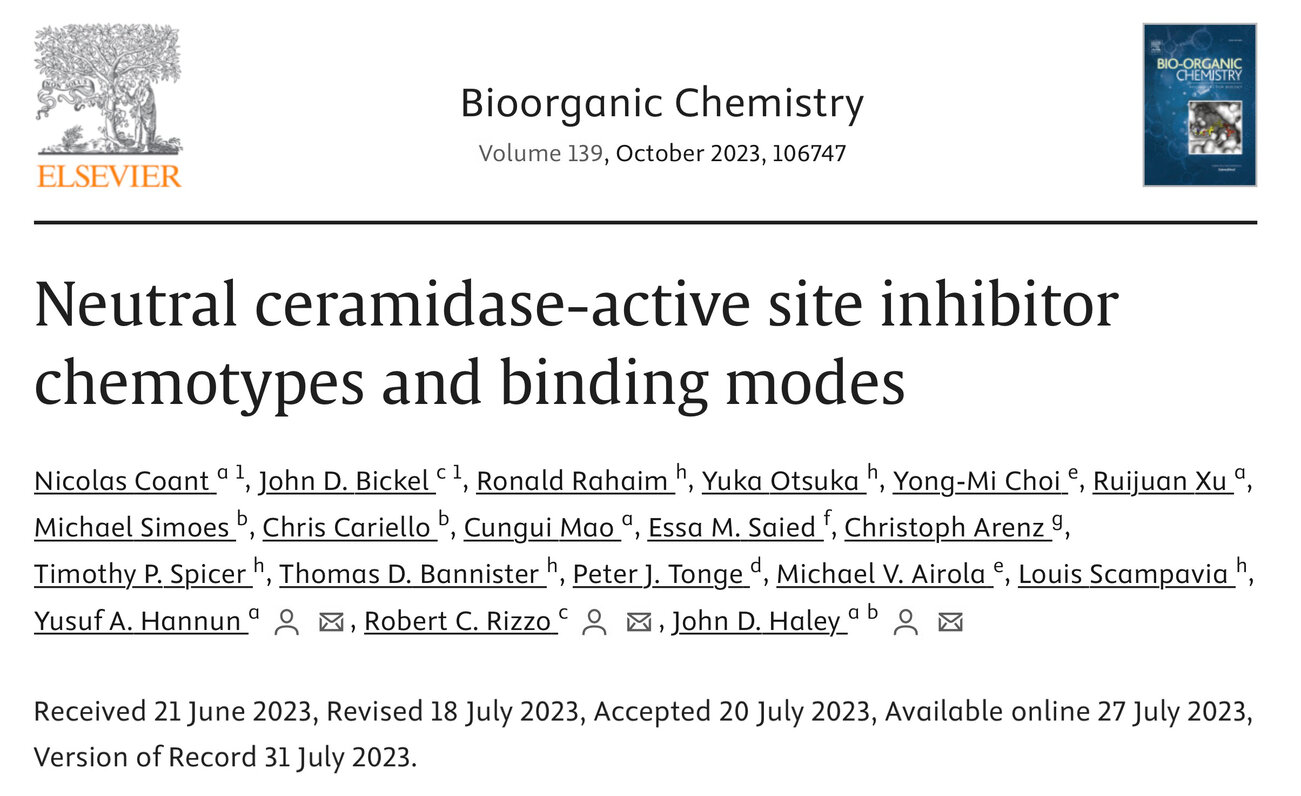
New publication from the Arenz Group!
The Organic and Bioorganic Chemistry Group was involved in the development of specific and potent inhibitors of the enzyme neutral ceramidase (nCDase), a hydrolase involved in the metabolism of Ceramides, which impact a diverse array of biological functions and have been implicated in disease pathogenesis. Check out their Bioorganic Chemistry article to learn more about the inhibitors.

New publication from the Ulrichs Group!
The Urban Plant Ecophysiology Group analyzed the phenolic secondary metabolite profile of willow bark. As willow bark can be processed as a herbal remedy, this knowledge enables the selection of suitable willow bark material with certain desired bioactive properties. Find out more in their Fitoterapia article.
We have a Coordinator!
In October 2023, our long-awaited coordinator was finally able to start. Sandra Keiper took over this task and is now the contact person for all matters relating to the IZ LIST. Welcome!
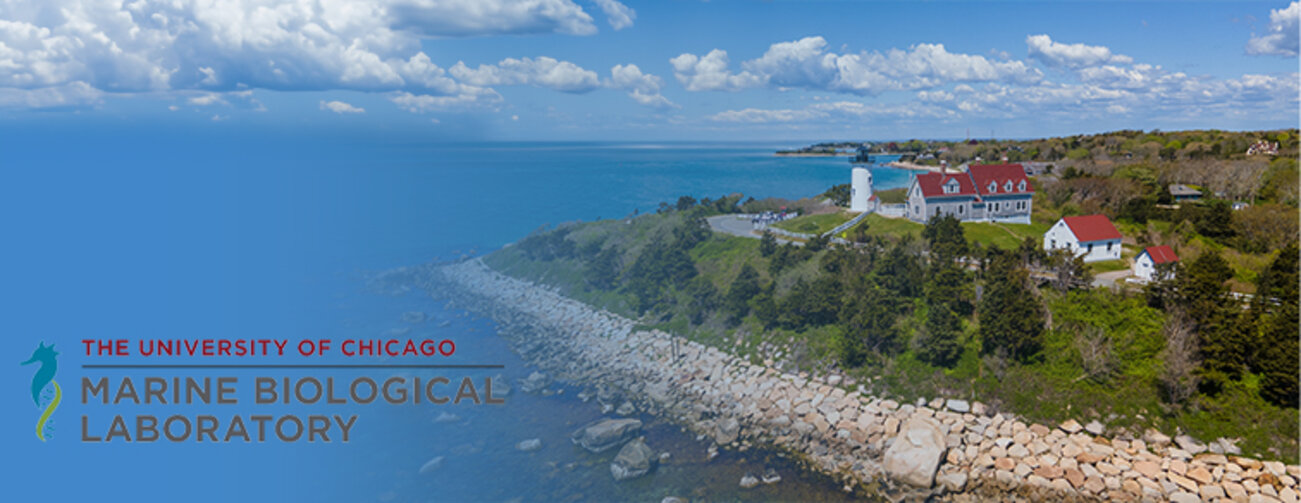
Physiology Summer School at the MBL (Marine Biological Laboratory) in Woods Hole, Massachusetts, USA
Travel Grant Report from Thomas Böddeker
We supported Thomas Böddeker from the Interfacial Cell Biology Group (Roland Knorr) with our IZ LIST Travel Grant to attend the Physiology Summer School at the MBL (Marine Biological Laboratory) in Woods Hole, Massachusetts, USA. We are very happy and grateful that he shared the experiences he gained during this course with us as it might be of interest as well as an inspiration for other scientists looking for further training opportunities.
Approval of IZ LIST proposal
At the beginning of 2023 our proposal for the establishment of the Interdisciplinary Center 'Life in Space and Time', short IZ LIST was approved by the Humoldt-Universität zu Berlin.